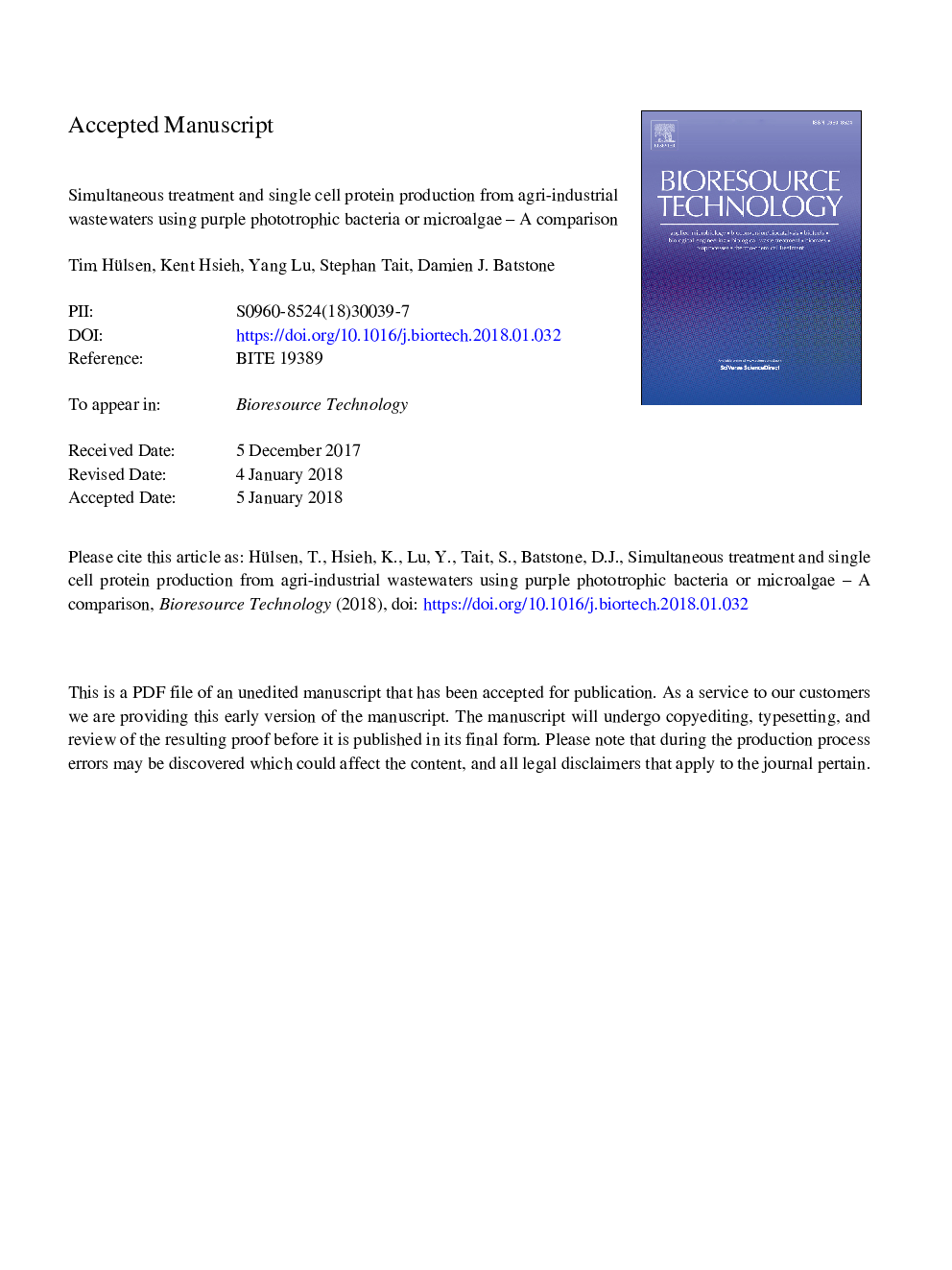| Article ID | Journal | Published Year | Pages | File Type |
|---|---|---|---|---|
| 7068197 | Bioresource Technology | 2018 | 39 Pages |
Abstract
Resource recovery, preferably as high value products, is becoming an integral part of modern wastewater treatment, with conversion to heterotrophic or phototrophic/photosynthetic microbes a key option to minimise dissipation, and maximise recovery. This study compares the treatment capacities of purple phototrophic bacteria (PPB) and microalgae of five agri-industrial wastewaters (pork, poultry, red meat, dairy and sugar) to recover carbon, nitrogen, and phosphorous as a microbial product. The mediators have different advantages, with PPB offering moderate removals (up to 74% COD, 80% NH4-N, 55% PO4-P) but higher yields (>0.75â¯gCODremoved gCODaddedâ1) and a more consistent, PPB dominated (>50%) product, with a higher crude protein product (>0.6â¯gCPâ¯gVSSâ1). The microalgae tests achieved a better removal outcome (up to 91%COD, 91% NH4-N, 73%PO4-P), but with poorer quality product, and <30% abundance as algae.
Related Topics
Physical Sciences and Engineering
Chemical Engineering
Process Chemistry and Technology
Authors
Tim Hülsen, Kent Hsieh, Yang Lu, Stephan Tait, Damien J. Batstone,
